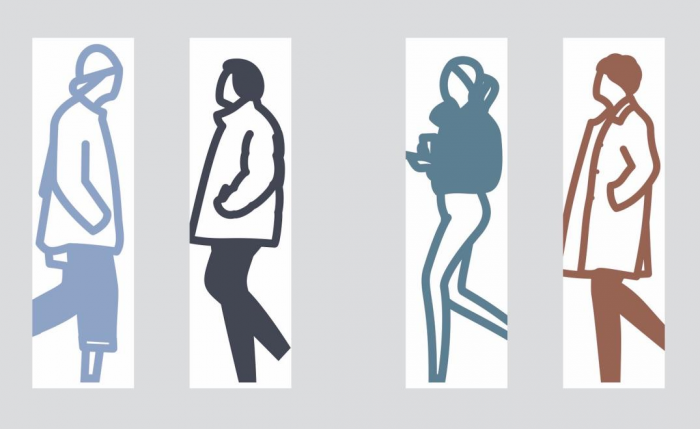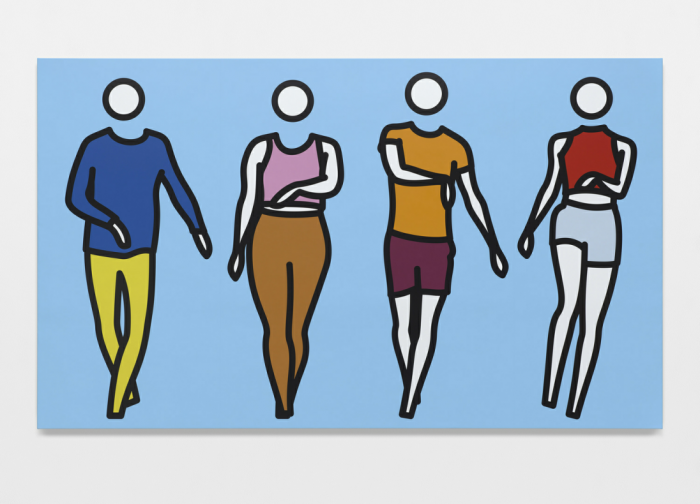2023-01-16 13:10
展览名称:朱利安·奥培
展览日期:2022年11月19日 – 2023年3月26日
地点:北京市顺义区金航东路 3 号院 D7 楼 4 层
著名英国艺术家朱利安·奥培 (Juian Opie) 在里森画廊全新北京空间的首次个展将呈现一系列 2022 年创作的全新作品。本次展览将通过不同媒介呈现奥培最标志性的艺术元素和突出他使用的全新技术,展出作品包括风景灯箱、全新不锈钢人体雕塑系列,及以 LED 动画、乙烯基和马赛克瓷砖呈现的舞蹈人像,它们共同彰显艺 术家对当代生活体验的持续探索——无论这种体验是发生在城市、乡村还是虚拟世界。本次展览是奥培继 2020 年的上海个展后,再度在里森中国推出展览。
关于里森画廊:里森画廊是全球最具影响力及历史悠久的国际当代艺术画廊之一。目前画廊通过在伦敦的两处艺术空间、在纽约的三处艺术空间、在上海和北京的两处艺术空间,以及即将开幕的洛杉矶空间,支持和发展的国际艺术家超过60位。


▲朱利安·奥培,《伦敦行人》,2022年,印刷道旗 ,145 x 42 cm (每个)
▲Julian Opie, London Walkers, 2022, printed banners, 145 x 42 cm (each)
艺术家简介:朱利安·奥培
■朱利安·奥培 (Julian Opie) 的作品享誉全球。从纽约到首尔,伦敦到苏黎世,在层出不穷的公共委托创作及国际博物馆展览中,奥培独特的艺术语言总是一眼就能被认出,反映着他对表象的描绘和图像的理解。“你所看到的一切都是光的把戏。”奥培写道,“光线反射到人们的眼睛中,投下阴影,创造出深度、形状和颜色。把关掉灯,一切都消失了。我们使用视觉作为生存的手段,必须将其视为理所当然才能发挥作用,但是意识使我们审视看待事物的方式,进而了解自己,并意识到自己的存在。画画,将创作过程中的感受和方式画出来,能将意识带入当下的时刻和现实世界,及这个外在的世界。”奥培始终探索最先进和最传统的技术,通过重新诠释日常生活中的词汇来探索事物。他的简洁风格唤起了我们对周围世界的视觉与空间体验。艺术家受古典肖像画、埃及象形文字、日本木版画,及公共标志、资讯板和交通标志的启发,将现代生活中纯粹的视觉语言与艺术史的基础元素联系起来。
■The work of Julian Opie is known throughout the world. With public commissions from New York to Seoul, London to Zurich, and an uninterrupted flow of international museum exhibitions, Opie’s distinctive formal language is instantly recognisable and reflects his artistic preoccupation with the idea of representation and the means by which images are perceived and understood. “Everything you see is a trick of the light,” Opie writes. “Light bouncing into your eye, light casting shadows, creating depth, shapes, colours. Turn off the light and it’s all gone. We use vision as a means of survival and it’s essential to take it for granted in order to function, but awareness allows us to look at looking and by extension look at ourselves and be aware of our presence. Drawing, drawing out the way that process feels and works brings the awareness into the present and into the real world, the exterior world.” Always exploring different techniques both cutting edge and ancient, Opie plays with ways of seeing through reinterpreting the vocabulary of everyday life; his reductive style evokes both a visual and spatial experience of the world around us. Drawing influence from classical portraiture, Egyptian hieroglyphs and Japanese woodblock prints, as well as public signage, information boards and traffic signs, the artist connects the clean visual language of modern life, with the fundamentals of art history.